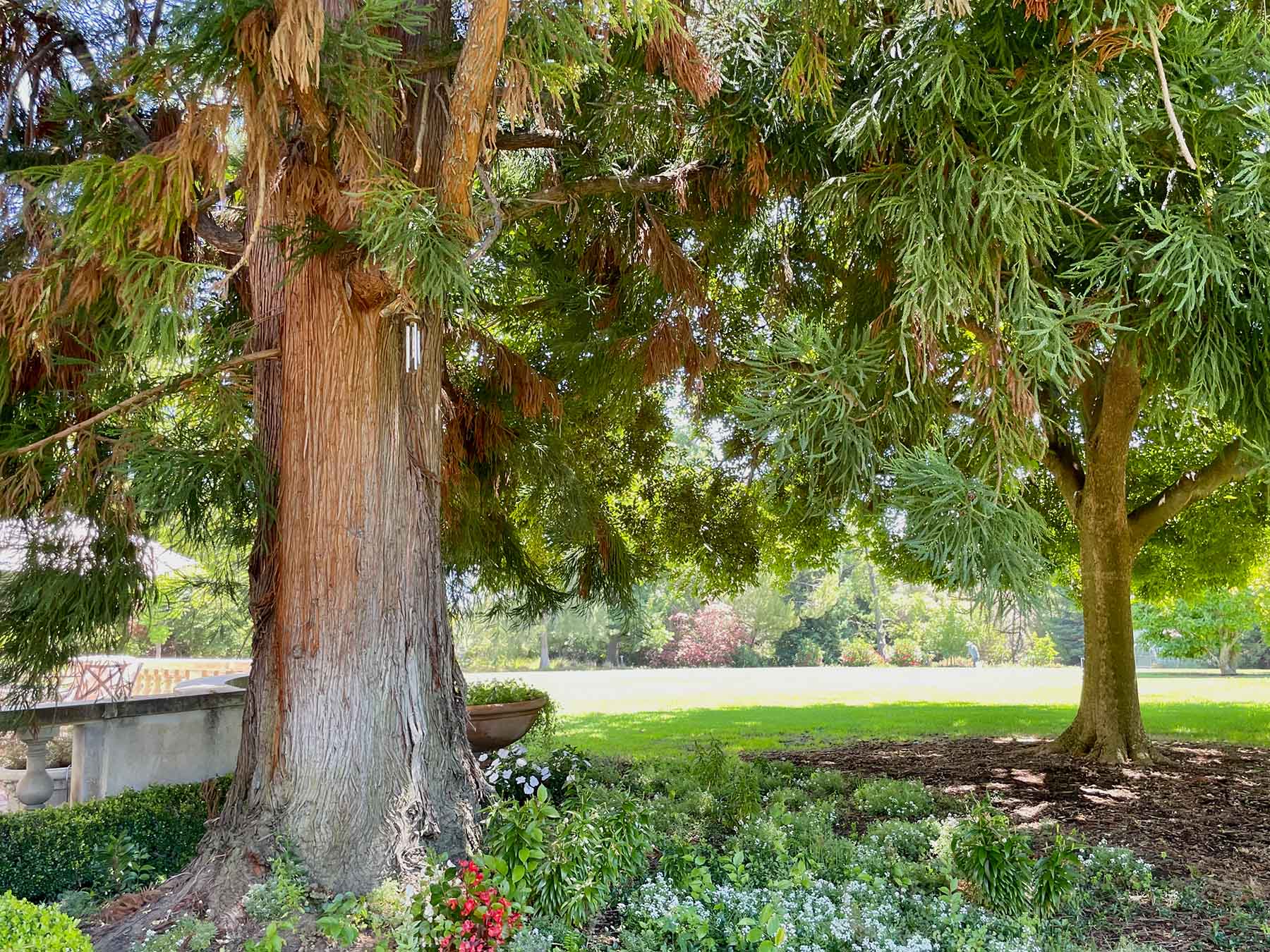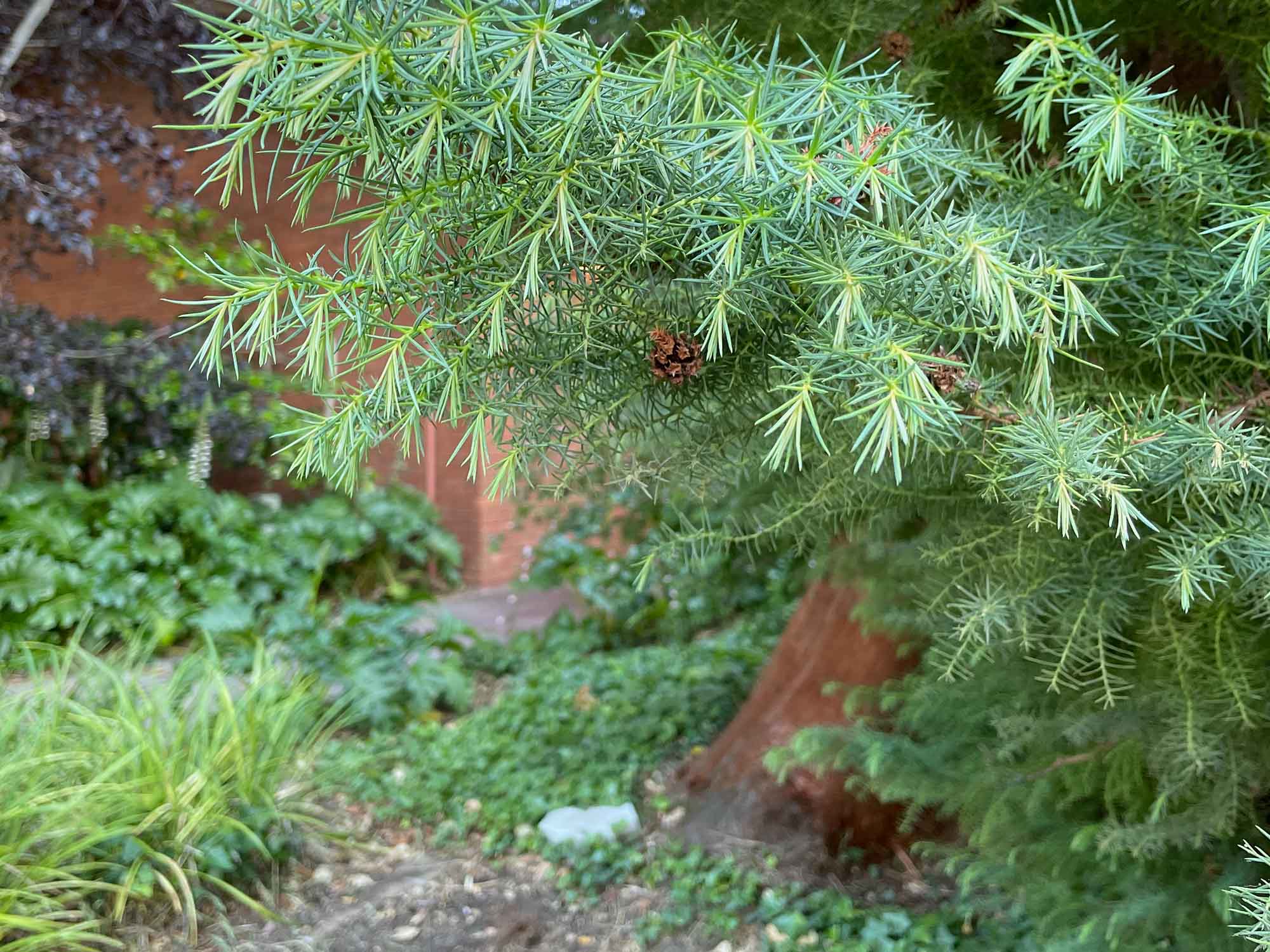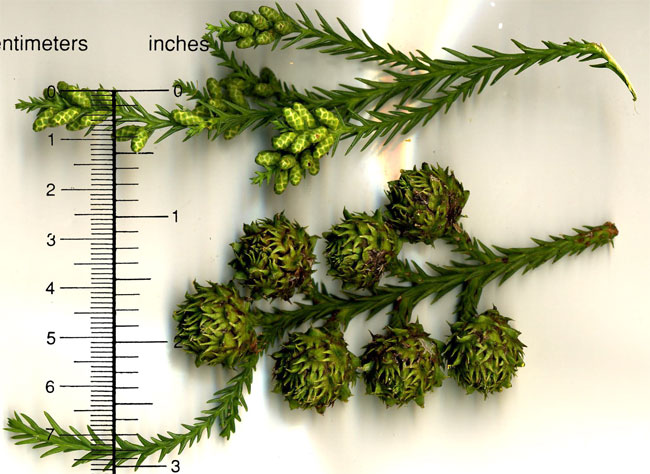Cryptomeria japonica
 Japanese cedar
Japanese cedar
A stately and choice conifer with warm-colored fibrous bark and sharp needles. The cones resemble those of redwood but are a little smaller and more nearly spherical, with the remarkable feature of each scale ending in three to five claws with an additional claw in the middle. The largest on central campus is at the right side of the driveway at Bolivar House (582 Alvarado Row), planted in 1892. A two-trunked giant towers over the southwestern corner of the house at the Meyer-Buck House on Sand Hill Road. See a smaller narrow one on the right of 838 Esplanada Way.
The ‘Elegans’ cultivar has feathery looking foliage which turns a striking bronze in winter. The small needles form fluffy thick masses. Campus specimens on Lagunita Drive and at the entrance to Old Chemistry have been lost, but a leaning tree with a thick forked trunk can be seen at the Palo Alto Art Center, 1313 Newell Road, near the Green Room entrance. The general appearance is rather different from that of the standard species which has stiff needles with a roughly triangular cross-section where they join the stem. See the shrubby ‘Lobbii Nana’ in the outer northwest planting circle of the Inner Quad.
Giant specimens of Japan’s largest tree are seen at Nikko, Japan. A bit closer to the Bay Area, the State Capital arboretum has a few grand examples.
Name derivation: Cryptomeria – Greek krypto (hidden) and meris (part), referring to the hidden reproductive parts; japonica – from Japan.
About this Entry: The main text of this entry is from the book Trees of Stanford and Environs, by Ronald Bracewell, published 2005. John Rawlings added the State Capital note. Family updated to Cupressaceae (Jan 2018, SP). Revised entry; added Meyer-Buck and Inner Quad locations; the title is now the straight species (Jan 2024, SP).






